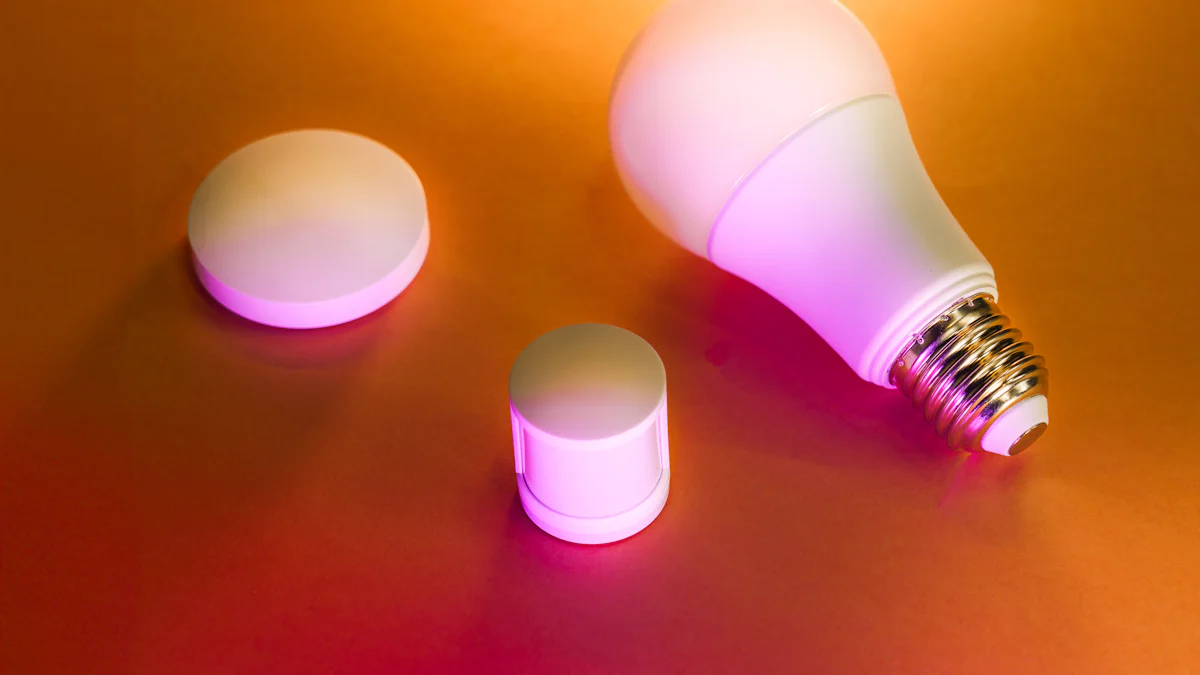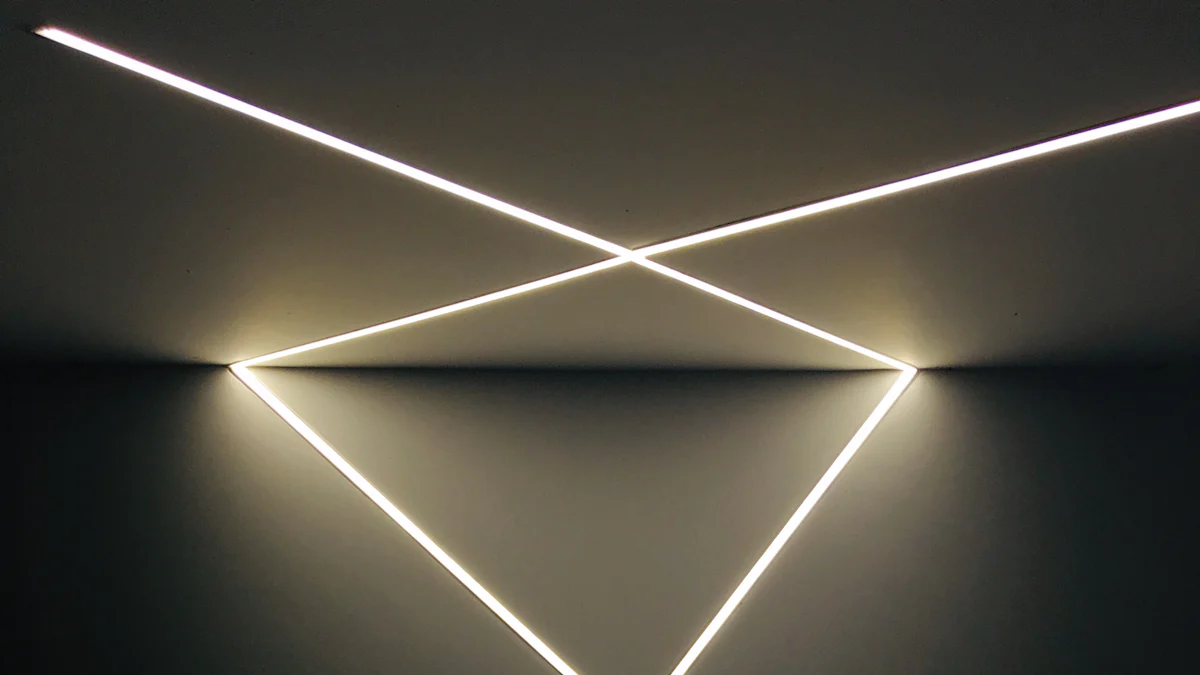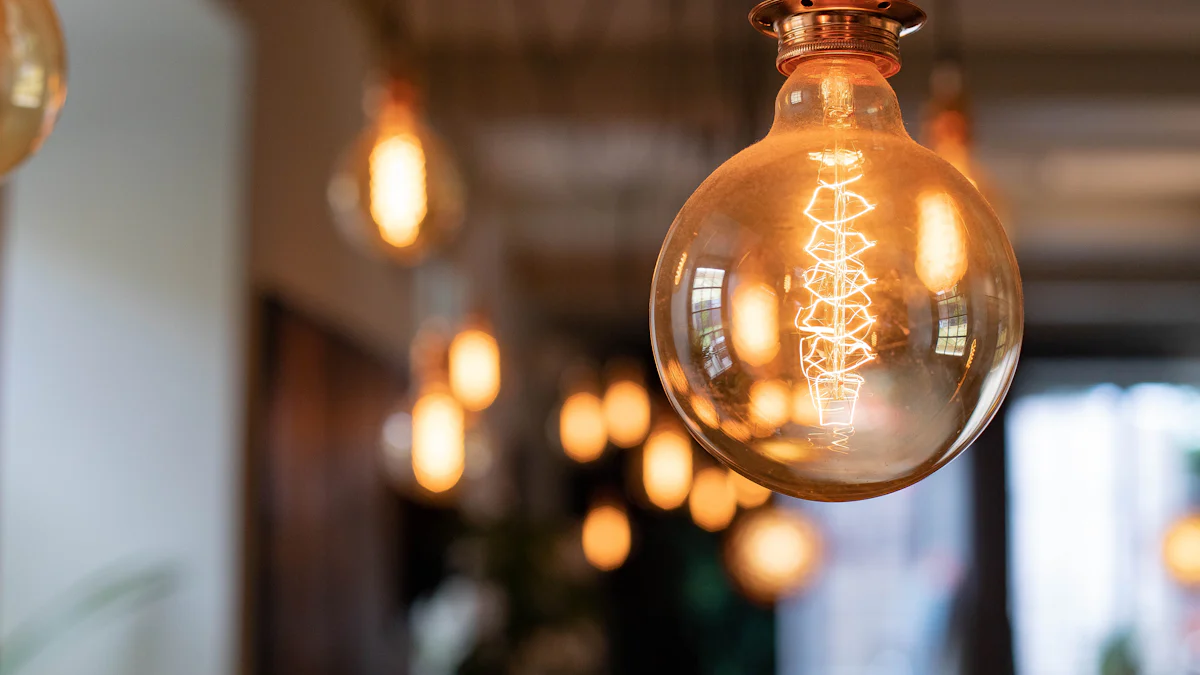
Using LED trouble lights correctly ensures optimal performance and safety. Incorrect usage can lead to issues such as dim output, excessive brightness, or even electrical hazards. Choosing reliable brands like LHOTSE Work Lights guarantees durability and efficiency. High-quality materials and innovative designs make these lights a preferred choice for professionals and hobbyists alike. Proper usage and maintenance of LED trouble lights not only extend their lifespan but also enhance work efficiency.
Common Installation Mistakes with LED Trouble Lights

Incorrect Placement of LED Trouble Lights
Avoiding Shadows and Glare
Incorrect placement of LED trouble lights often results in shadows and glare. Poorly lit areas increase the risk of accidents and injuries. Proper positioning ensures even illumination, reducing the chances of falling or slipping. Always position LED trouble lights to avoid casting shadows on work surfaces. This practice enhances visibility and safety.
Ensuring Proper Coverage
Proper coverage is essential for effective lighting. Inadequate coverage leads to poorly lit areas, affecting work efficiency. Ensure that LED trouble lights cover the entire workspace. This approach provides consistent lighting, improving overall productivity. Proper coverage also prevents eye strain, making tasks easier to perform.
Improper Mounting of LED Trouble Lights
Using the Right Tools
Using the right tools is crucial for mounting LED trouble lights. Improper mounting leads to instability and potential hazards. Always use appropriate tools to secure the lights firmly. This practice ensures that the lights remain in place, providing reliable illumination. Proper mounting also prevents damage to the lights, extending their lifespan.
Securing the Lights Firmly
Securing LED trouble lights firmly is essential for safety. Loose fixtures pose a risk of falling, causing injuries or damage. Ensure that all mounts and brackets are tightly secured. This practice guarantees that the lights stay in position, providing consistent lighting. Firmly secured lights also prevent electrical issues, enhancing overall performance.
Electrical Issues in LED Trouble Lights
Checking Voltage Compatibility
Voltage compatibility is vital for the proper functioning of LED trouble lights. Incorrect voltage leads to fixture failures and poor performance. Always check the voltage requirements before installation. This practice prevents electrical problems, ensuring reliable operation. Proper voltage compatibility also extends the life of the lights, providing long-term benefits.
Proper Wiring Techniques
Proper wiring techniques are crucial for safe and efficient lighting. Poor electrical connections result in intermittent power supply and short circuits. Always follow correct wiring procedures when installing LED trouble lights. This practice ensures stable power delivery, enhancing the lights’ performance. Proper wiring also reduces the risk of electrical fires, safeguarding home safety.
Common Maintenance Mistakes with LED Trouble Lights
Neglecting Regular Cleaning of LED Trouble Lights
Removing Dust and Debris
Regular cleaning of LED trouble lights ensures optimal performance. Dust and debris accumulate on the light surface, reducing brightness. Use a soft cloth to wipe away dust. This practice maintains clear illumination and prevents overheating. Clean LED trouble lights regularly to avoid performance issues.
Cleaning Light Covers
Light covers protect the internal components of LED trouble lights. Dirty covers obstruct light output. Remove and clean light covers periodically. Use mild soap and water for cleaning. Ensure covers dry completely before reattaching. Clean light covers enhance brightness and extend the lifespan of LED trouble lights.
Ignoring Wear and Tear in LED Trouble Lights
Inspecting for Damage
Regular inspections identify wear and tear in LED trouble lights. Check for cracks, loose connections, and other damages. Address issues promptly to prevent further damage. Regular inspections ensure safe and reliable operation. Inspect LED trouble lights frequently to maintain their functionality.
Replacing Worn-out Parts
Worn-out parts affect the performance of LED trouble lights. Replace damaged components immediately. Use compatible parts to ensure proper functioning. Regular maintenance includes replacing worn-out parts. This practice extends the life of LED trouble lights and ensures consistent performance.
Overlooking Battery Care in LED Trouble Lights
Proper Charging Practices
Proper charging practices maintain the efficiency of LED trouble lights. Avoid overcharging to extend battery life. Use the recommended charger for optimal results. Charge batteries fully before use. Proper charging practices prevent battery damage and ensure reliable performance.
Storing Batteries Correctly
Correct storage of batteries enhances the longevity of LED trouble lights. Store batteries in a cool, dry place. Avoid exposure to extreme temperatures. Proper storage prevents battery degradation. Follow these guidelines to maintain the efficiency of LED trouble lights.
Common Usage Mistakes with LED Trouble Lights

Overloading LED Trouble Lights
Understanding Load Limits
Understanding load limits is crucial for the safe operation of LED trouble lights. Exceeding the recommended load can cause overheating and reduce the lifespan of the lights. Always check the manufacturer’s specifications to know the maximum load capacity. This practice prevents damage and ensures reliable performance.
Distributing Load Evenly
Distributing the load evenly across LED trouble lights enhances their efficiency. Uneven load distribution can lead to flickering and inconsistent lighting. Position the lights to cover the workspace uniformly. This method provides balanced illumination and reduces strain on individual lights.
Using LED Trouble Lights in Inappropriate Conditions
Avoiding Extreme Temperatures
Avoiding extreme temperatures is essential for the longevity of LED trouble lights. High or low temperatures can affect the performance and durability of the lights. Use LED trouble lights within the temperature range specified by the manufacturer. This practice ensures optimal functionality and extends the life of the lights.
Protecting from Moisture
Protecting LED trouble lights from moisture prevents electrical hazards and corrosion. Exposure to water can cause short circuits and damage internal components. Ensure that all connections are sealed properly. Use waterproof models for outdoor or damp environments. This precaution maintains the safety and efficiency of the lights.
Misusing Light Settings on LED Trouble Lights
Adjusting Brightness Appropriately
Adjusting brightness appropriately enhances the usability of LED trouble lights. Incorrect brightness settings can cause eye strain or insufficient lighting. Use the dimming feature to set the right level of brightness for different tasks. Proper adjustment improves visibility and comfort during work.
Utilizing Different Modes Effectively
Utilizing different modes effectively maximizes the benefits of LED trouble lights. Many models offer various lighting modes for different applications. Select the appropriate mode based on the task at hand. This approach optimizes the lighting conditions and improves work efficiency.
Avoiding common mistakes with LED trouble lights ensures optimal performance and safety. Proper installation, maintenance, and usage enhance the longevity and efficiency of these lights. Choosing LHOTSE Work Lights guarantees reliability and versatility. The compact design and long-lasting battery make these lights a reliable companion for various tasks. Implementing these tips will improve work efficiency and safety. Invest in LHOTSE Work Lights for a dependable lighting solution.
Post time: Jul-12-2024
